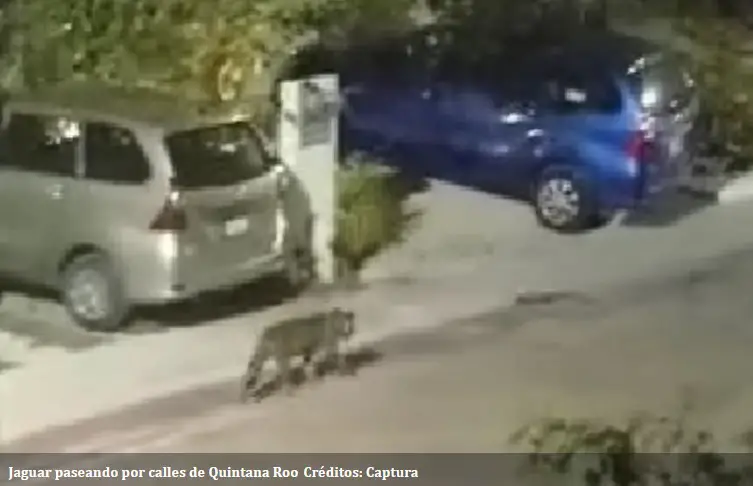The population of endangered felines is growing in Yucatán, including species such as jaguar, ocelot, puma, and jaguarundi.
Trap cameras installed in the Yucatan natural reserves have recorded the increase in jaguars, an endangered species that for the Maya symbolizes power, strength, life, and fertility.
“We found such beautiful and culturally important species, like jaguars,” Toshio Yokoyama Cobá, director of Natural Resources Management and Conservation of the Secretariat of Sustainable Development of Yucatán, told the local press.
These records are part of the Continuous Biodiversity Monitoring, creation of Yokoyama Cobá, which applies to the Dzilam de Bravo, Tabí, and Puuc Biocultural Reserves.
He also points out that large-lipped peccaries have also been found that did not know where they were distributed.
Technology to identify species
Last May, the company Huawei reported that Artificial Intelligence helps the conservation of the jaguar thanks to a monitoring system that analyzes images and sounds to identify the felines.
The Tech4Nature Mexico project, a Huawei initiative, identified five jaguars in the Dzilam de Bravo reserve.
In total, they classified 119 species, including birds (88), mammals (22), reptiles (5), and amphibians (4), of which 34 are on the Red List of Threatened Species of the International Union for Conservation of Nature ( IUCN).
“Technology is key, but if you don’t know the right areas to deploy it, you won’t do much,” said Yokoyama Cobá.

Feline population increases
Only in the Dzilam de Bravo Reserve, did they discover seven specimens in an area of 10 or 15 kilometers, a similar number was detected in the Puuc Natural Reserve, in the south of the state.
Yokoyama Cobá highlighted the support of the Mayan community that lives around the natural reserves, who are trained to work with the camera traps. “They install them where they know the species are to monitor them and obtain more data,” she explains.
Mexico has a population of 4,800 jaguars in the wild, which represents an increase of 20 percent in relation to the data reported in 2010, reveals the Second National Jaguar Census 2018 coordinated by the Institute of Ecology of the National Autonomous University of Mexico (UNAM).
For his part, Jesús Bobadilla, head of the San Manuel Wildlife Conservation Management Unit (UMA), which is located within the Ría Lagartos biosphere reserve, confirmed that the jaguar population is growing in Yucatán: At that site, they found 14 specimens.
The UMA San Manuel is in a protected natural area of more than 60,300 hectares that includes the ports of El Cuyo, Las Coloradas, Río Lagartos, and San Felipe.
“There are 74 kilometers of coast and the UMA San Manuel is a private property that is in the polygonal of the reserve that is on the border with Quintana Roo, where the jaguar is conserved and monitored,” he explained.
On the site there are mangroves, medium-sized jungle, flooded lowland jungle, and savannah, “four of the 10 habitats in the Ría Lagartos biosphere,” he added.
“14 jaguars were identified by the field marks they have on their bodies, which are unique,” he said.
Bobadilla explained that the population of endangered felines is growing in Yucatan, “we have seen jaguars, ocelots, pumas, ocelots, and jaguarundis, as well as turkeys, wild boars, deer and other species.”
Source: López Dóriga Digital






